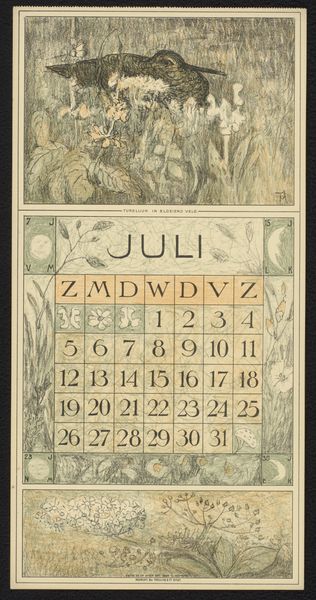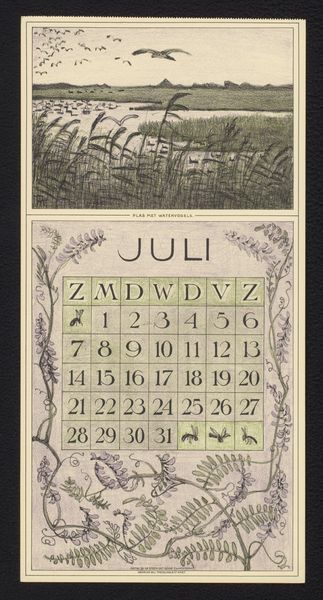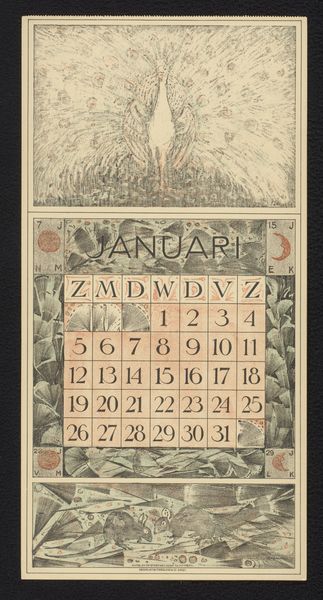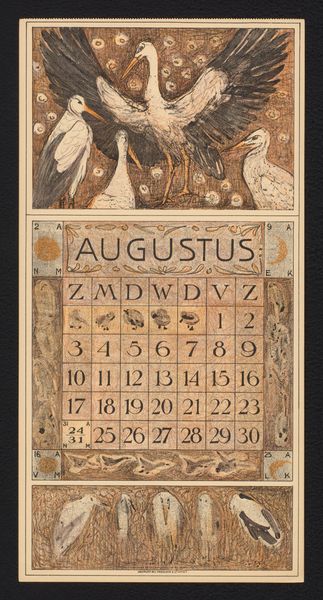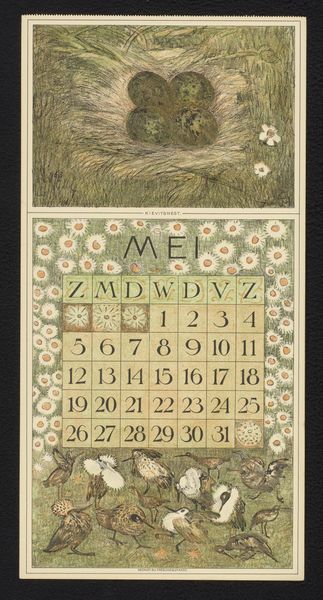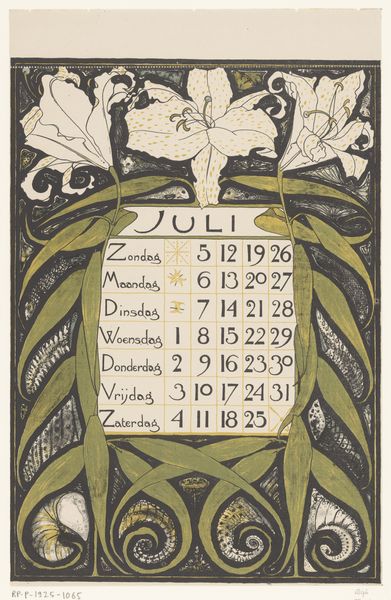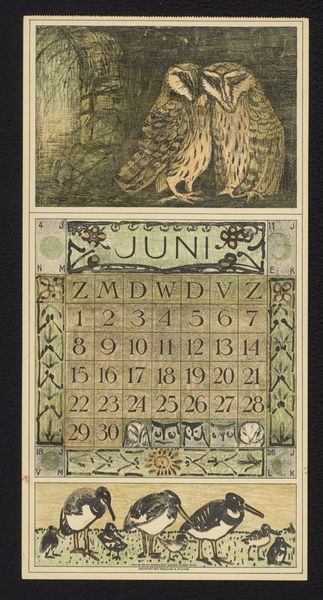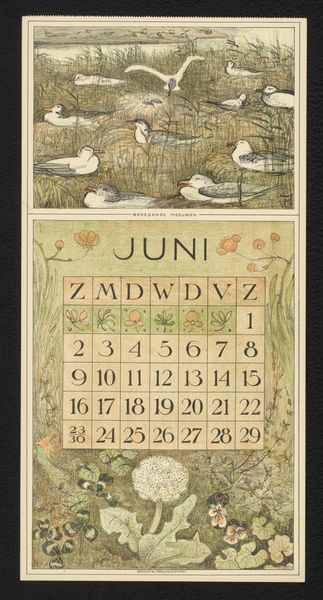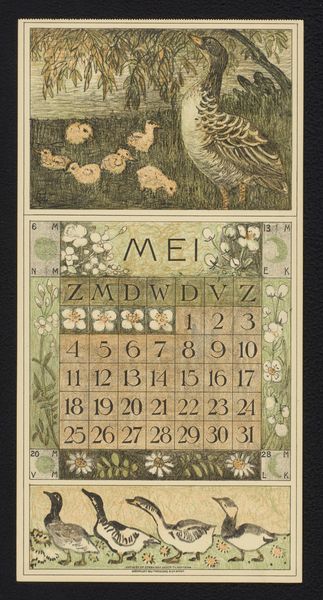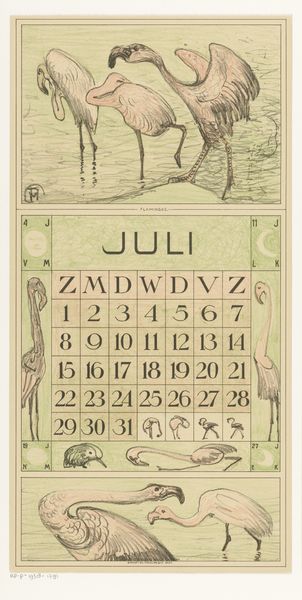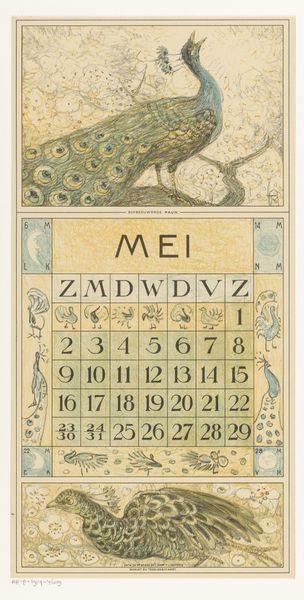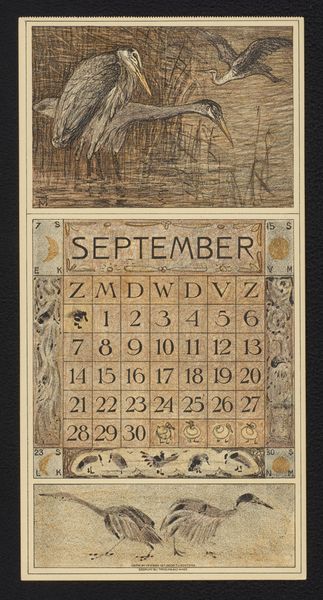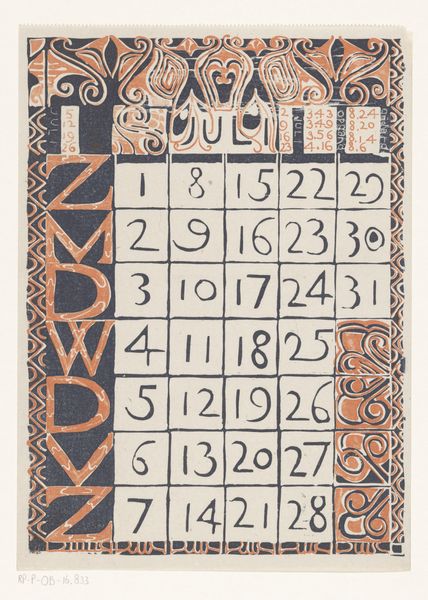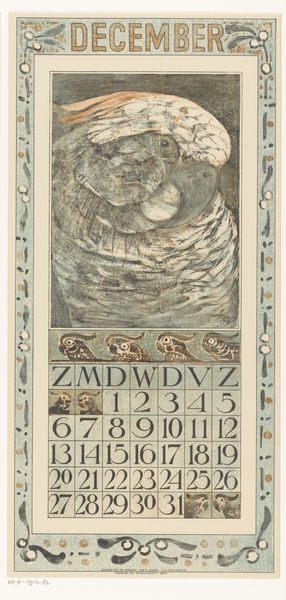
drawing, print
#
drawing
#
natural stone pattern
#
wood texture
#
naturalistic pattern
#
art-nouveau
#
loose pattern
# print
#
man-made pattern
#
landscape
#
tile art
#
wooden texture
#
intricate pattern
#
pattern repetition
#
layered pattern
Dimensions: height 418 mm, width 212 mm
Copyright: Rijks Museum: Open Domain
Editor: This is Theo van Hoytema’s “Kalenderblad voor juli 1913 met drie lepelaars,” made in 1912. It looks like a print or drawing. The depiction of spoonbills at the top and bottom really catches my eye, giving it a distinctly decorative feel. What do you see in this piece? Curator: Beyond the decorative aspect, I am struck by the interplay of nature and industrial production. Consider how a calendar, a tool for managing labor and industry, is presented here. We see these elegantly rendered spoonbills, images sourced directly from nature, reproduced through printmaking—a process reliant on labor, specialized materials, and distribution networks. Editor: That’s interesting, I hadn’t thought of it that way. It seemed like a celebration of nature. Curator: And perhaps it is, in part. But isn't the act of mass-producing and distributing this "natural" imagery inherently linked to capitalist modes of production? The calendar, as a functional object, facilitates the organization of work, while the images of the spoonbills serve almost as a commodity, packaged and sold within this framework. How does this tension play out within Art Nouveau more broadly? Editor: So, you're suggesting it's not just about appreciating nature but understanding how images of nature are used and circulated within a specific economic system. Curator: Precisely! Think about the labor involved in creating the printing plates, the paper manufacturing, the distribution channels... all these processes contribute to the final product we see before us. Editor: This perspective really highlights the connection between art and industry, something I hadn’t considered before. I will definitely look at Art Nouveau through a different lens now. Curator: I hope you do! Analyzing art from the standpoint of material conditions gives us a richer understanding of its role and meaning in society.
Comments
No comments
Be the first to comment and join the conversation on the ultimate creative platform.
